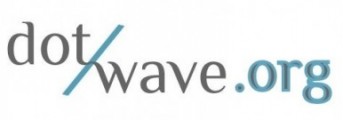Andersen, A., Madsen, J., Reichelt, C., Ahl, S. R., Lautrup, B., Ellegaard, C., … & Bohr, T. (2015). Double-slit experiment with single wave-driven particles and its relation to quantum mechanics. Physical Review E, 92(1), 013006.
ABSTRACT :
In a thought-provoking paper, Couder and Fort [Phys. Rev. Lett. 97, 154101 (2006)] describe a version of the famous double-slit experiment performed with droplets bouncing on a vertically vibrated fluid surface. In the experiment, an interference pattern in the single-particle statistics is found even though it is possible to determine unambiguously which slit the walking droplet passes. Here we argue, however, that the single-particle statistics in such an experiment will be fundamentally different from the single-particle statistics of quantum mechanics. Quantum mechanical interference takes place between different classical paths with precise amplitude and phase relations. In the double-slit experiment with walking droplets, these relations are lost since one of the paths is singled out by the droplet. To support our conclusions, we have carried out our own double-slit experiment, and our results, in particular the long and variable slit passage times of the droplets, cast strong doubt on the feasibility of the interference claimed by Couder and Fort. To understand theoretically the limitations of wave-driven particle systems as analogs to quantum mechanics, we introduce a Schrödinger equation with a source term originating from a localized particle that generates a wave while being simultaneously guided by it. We show that the ensuing particle-wave dynamics can capture some characteristics of quantum mechanics such as orbital quantization. However, the particle-wave dynamics can not reproduce quantum mechanics in general, and we show that the single-particle statistics for our model in a double-slit experiment with an additional splitter plate differs qualitatively from that of quantum mechanics.
http://sci-hub.bz/10.1103/physreve.92.013006#


